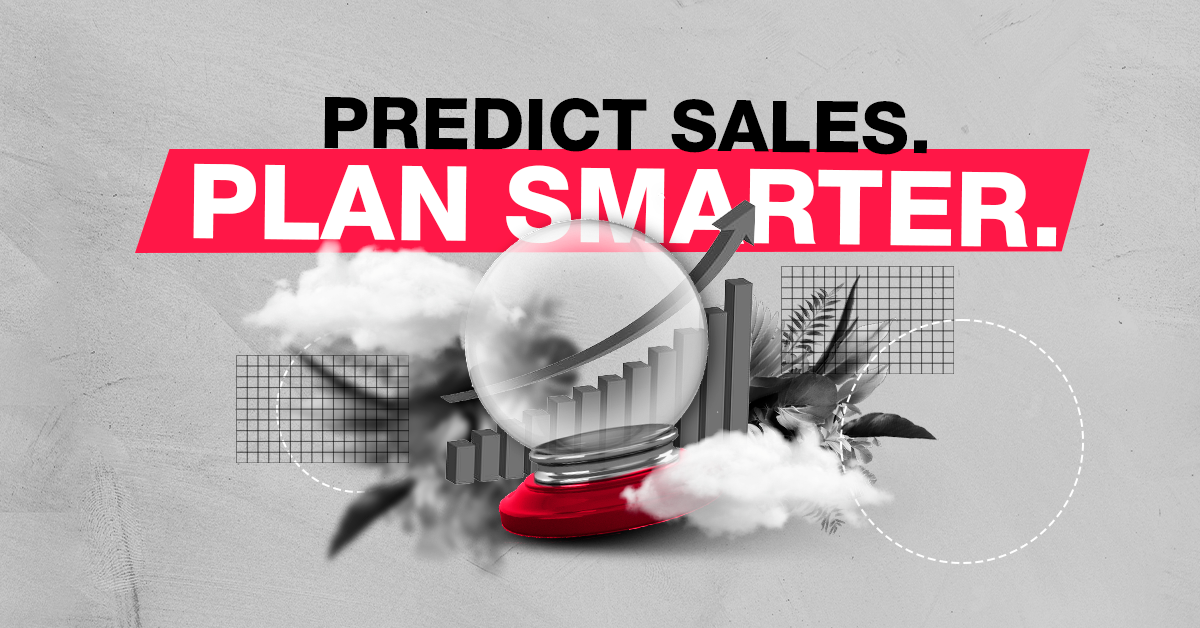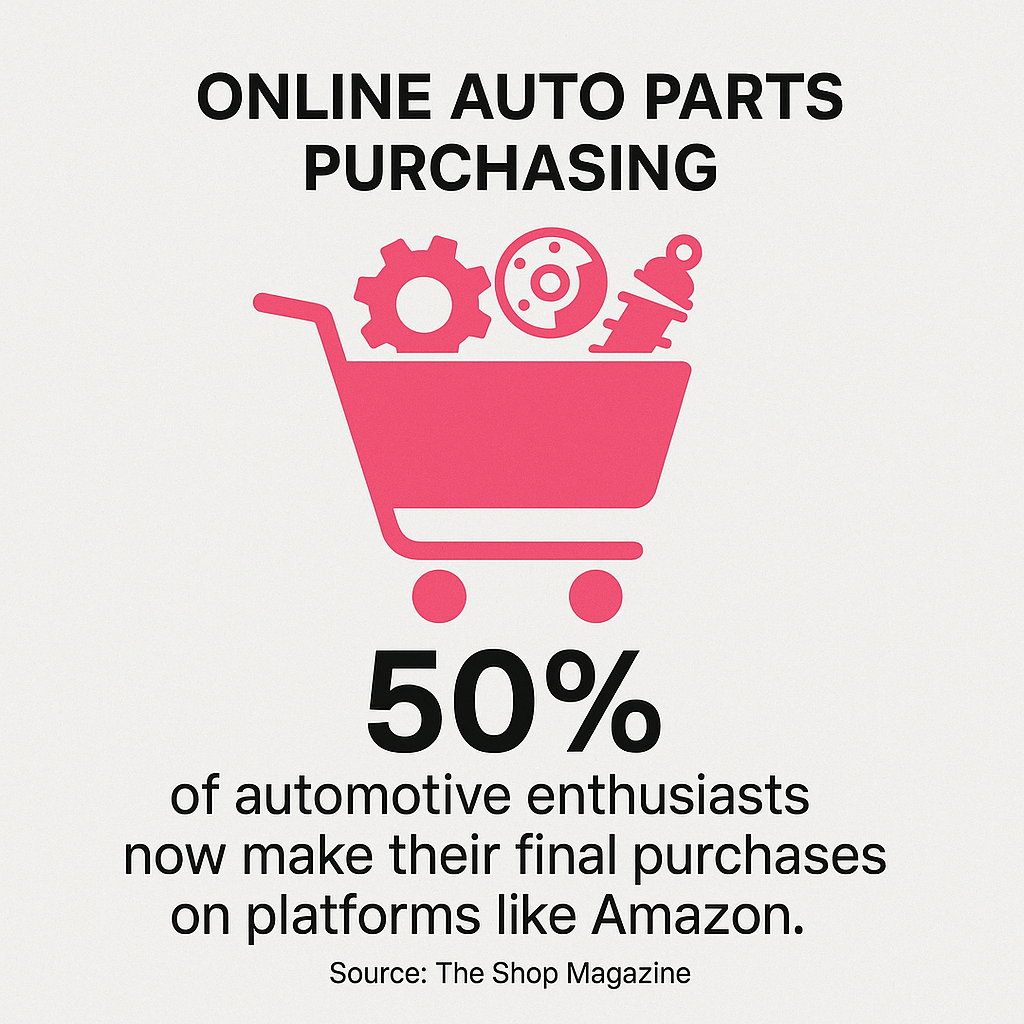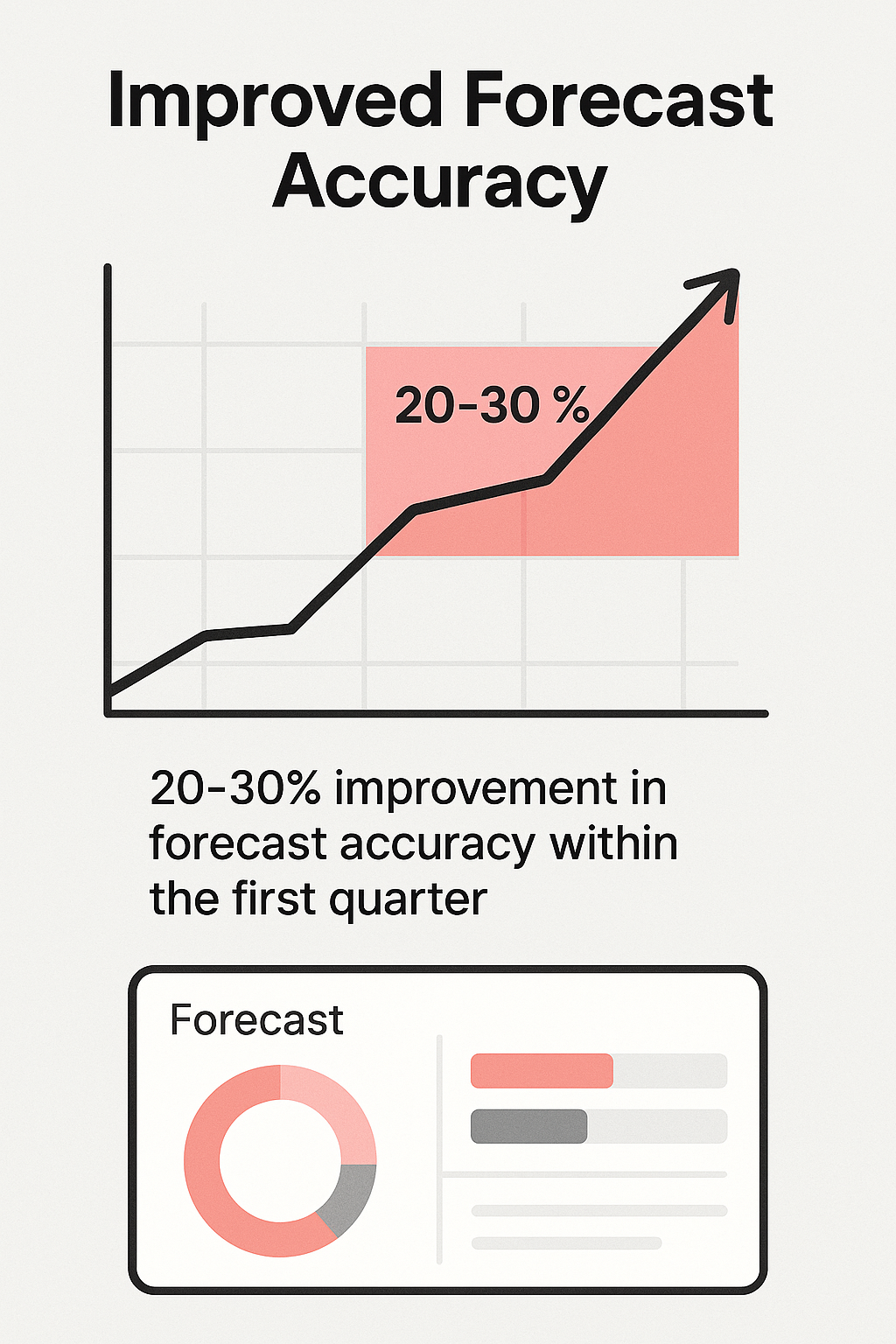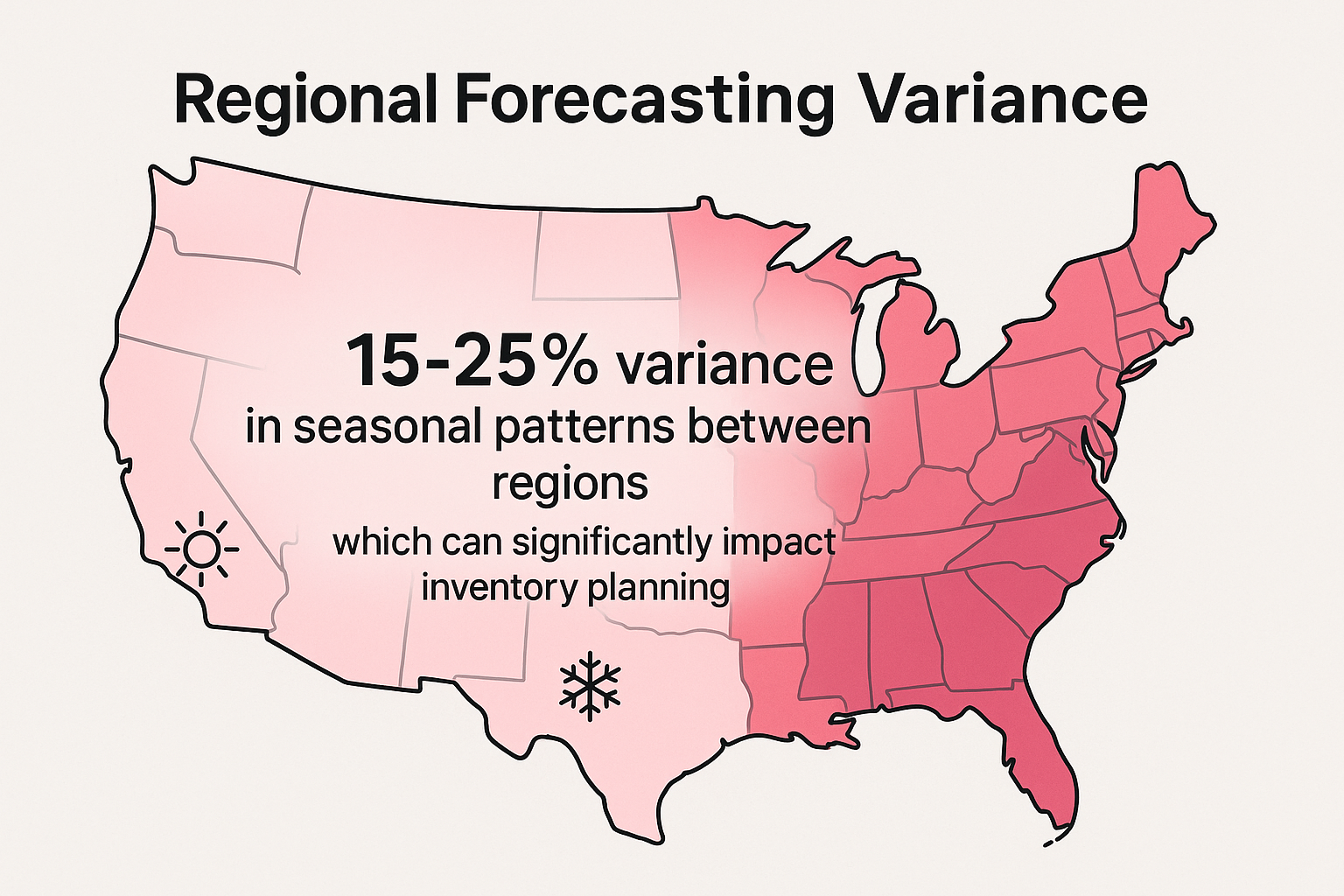
You know that feeling when you're staring at inventory reports, trying to figure out whether to stock 500 or 5,000 units of that hot new intake manifold? I've been there with my automotive aftermarket clients more times than I can count. In the automotive aftermarket, getting demand forecasting right isn't just about avoiding stockouts—it's about making smart decisions that drive profitability in a market worth $430.51 billion and growing at 3.6% annually (Source: Fortune Business Insights). The challenge isn't just the numbers; it's understanding how modern consumers research, compare, and buy auto parts online.
What makes automotive aftermarket demand forecasting particularly tricky is the unique buying behavior we see in this space. Unlike other ecommerce categories where purchases are often impulse-driven, automotive enthusiasts and professionals follow distinct patterns. They research extensively, compare specifications, and make decisions based on vehicle compatibility and performance needs. This creates both opportunities and challenges for forecasting demand accurately.
In this guide, we'll break down the current market dynamics, explore proven forecasting methodologies specifically tailored for automotive parts, and give you actionable strategies to predict demand more accurately. Whether you're selling performance parts, replacement components, or specialty accessories, understanding these forecasting principles will help you optimize inventory, reduce costs, and capture more market share.
The automotive aftermarket has undergone significant changes in recent years, with digital transformation reshaping how consumers discover and purchase parts. Today's market presents unique challenges and opportunities that directly impact how we approach demand forecasting. Understanding these dynamics is crucial for developing accurate prediction models.
The shift toward online purchasing has accelerated dramatically, with 50% of automotive enthusiasts now making their final purchases on platforms like Amazon (Source: The Shop Magazine). This trend represents more than just a channel preference—it fundamentally changes how demand patterns develop and fluctuate. Traditional seasonal patterns still exist, but they're now layered with digital-specific behaviors like social media influence cycles and online promotional events.

|
Market Segment
|
2024 Market Value
|
Growth Rate (CAGR)
|
Key Drivers
|
|---|---|---|---|
|
Global Automotive Aftermarket
|
$430.51 billion
|
3.6%
|
Vehicle aging, digital adoption
|
|
North American Market
|
$135.0 billion
|
3.6%
|
Large vehicle population, tech integration
|
|
Ecommerce Segment
|
Growing rapidly
|
Above industry average
|
Digital transformation, convenience
|
Regional variations play a significant role in demand forecasting accuracy. North America dominates with 31.34% of the global market share, but this concentration comes with specific patterns we need to account for (Source: Fortune Business Insights). American consumers tend to be more modification-focused, while other regions prioritize maintenance and replacement parts. When I work with clients expanding internationally, these regional preferences become critical forecasting variables.

The rise of electric and hybrid vehicles is creating new forecasting challenges and opportunities. While traditional ICE vehicle parts maintain strong demand due to the existing vehicle population, smart automotive marketers are already preparing for shifting demand patterns. Electric vehicle adoption rates directly impact long-term forecasting models, especially for performance and modification parts.
Several major trends are reshaping automotive aftermarket demand, and understanding these patterns is essential for accurate forecasting. These trends don't just influence what products sell—they fundamentally change when, where, and how consumers make purchasing decisions. As someone who's managed countless automotive campaigns, I've seen these shifts create both windfall opportunities and forecasting blind spots.
Social media platforms have become primary research starting points, with Instagram and TikTok driving initial product discovery while Facebook continues to generate quality leads (Source: The Shop Magazine). This creates a complex multi-touch attribution model that affects demand timing. A viral TikTok video about a specific modification can create sudden demand spikes that traditional forecasting models miss entirely.
The emergence of AI in search results is particularly interesting for demand forecasting. While not yet widely used for initial research, AI-generated recommendations are starting to influence purchasing decisions (Source: The Shop Magazine). This creates a feedback loop where popular products become more visible, potentially amplifying demand beyond what traditional forecasting would predict.
Vehicle aging remains the strongest demand driver, but the definition of "aging" is evolving. Modern vehicles maintain reliability longer, but enthusiasts are modifying newer vehicles sooner. This creates a more complex demand curve that requires sophisticated forecasting approaches. Our research into aftermarket consumer behavior shows that modification timing is becoming less predictable but more influenced by digital marketing efforts.
|
Trend Category
|
Impact on Demand
|
Forecasting Implications
|
Recommended Response
|
|---|---|---|---|
|
Social Media Influence
|
Sudden spikes, viral effects
|
Need real-time monitoring
|
Flexible inventory systems
|
| Digital Transformation |
Steady growth, predictable patterns
|
Reliable trend forecasting
|
Invest in digital capabilities
|
|
Vehicle Electrification
|
Gradual shift, regional variation
|
Long-term model adjustments
|
Diversify product portfolio |
|
Subscription Services
|
Predictable recurring demand |
Improved forecast accuracy
|
Develop subscription offerings
|
Effective demand forecasting for automotive parts requires a blend of traditional statistical methods and modern digital analytics. The key is understanding which approaches work best for different product categories and market segments. In my experience working with automotive clients, the most successful forecasting combines historical sales data, market intelligence, and real-time digital signals.
Start with time series analysis using your historical sales data, but don't rely on it exclusively. Automotive parts have unique seasonality patterns that vary by product type. Performance parts see spikes during car show season and tax refund periods, while maintenance items follow more predictable seasonal patterns. Winter preparations drive certain categories, while summer modifications create different demand cycles.
Digital signal integration is where modern automotive forecasting really shines. Search volume data, social media mentions, and competitor pricing intelligence provide leading indicators that traditional methods miss. When I help clients implement these systems, we typically see 20-30% improvement in forecast accuracy within the first quarter. Modern inventory management systems make it easier to integrate these diverse data sources.

|
Forecasting Method
|
Best For
|
Data Requirements
|
Accuracy Range
|
|---|---|---|---|
|
Time Series Analysis
|
Established products, seasonal items
|
12+ months sales history
|
70-85%
|
|
Market Intelligence
|
New products, trend-driven items
|
Industry reports, competitor data
|
60-75%
|
|
Digital Signal Integration
|
Fast-moving, social-influenced products
|
Search, social, web analytics
|
75-90%
|
| Hybrid Approach |
Complete product portfolio
|
All of the above
|
80-95%
|
Machine learning approaches work particularly well for automotive parts because of the rich attribute data available. Vehicle compatibility, part specifications, and performance characteristics create natural clustering opportunities. When combined with purchase history, these attributes help predict cross-selling opportunities and seasonal demand shifts more accurately than traditional methods.
Don't overlook the power of customer segmentation in your forecasting models. Professional mechanics buy differently than weekend warriors, and performance enthusiasts have different patterns than maintenance-focused consumers. Understanding these segments helps create more nuanced demand predictions that account for different purchase motivations and timing.
Regional differences in automotive aftermarket demand create both opportunities and challenges for forecasting. North American consumers represent the largest market segment at 31.34% of global demand, but this concentration comes with specific patterns that affect forecasting accuracy (Source: Fortune Business Insights). Understanding these regional nuances is crucial for developing robust demand prediction models.
Climate plays a much larger role in automotive aftermarket demand than most other ecommerce categories. Snow belt regions see predictable spikes in winter preparation products, while southern markets maintain steadier demand for performance modifications year-round. When I work with clients on regional expansion, we typically see 15-25% variance in seasonal patterns between regions, which can significantly impact inventory planning.

Cultural factors also influence demand patterns in ways that pure statistical models might miss. Truck modification culture in Texas creates different demand cycles than import tuning scenes in California. These cultural elements create reliable regional patterns once you understand them, but they require local market knowledge to forecast accurately.
|
Region
|
Market Share
|
Primary Demand Drivers
|
Seasonal Patterns
|
|---|---|---|---|
| North America |
31.34%
|
Modification culture, large vehicle population
|
Strong winter/summer cycles
|
|
Europe
|
27.8%
|
Efficiency focus, regulatory compliance
|
Moderate seasonal variation
|
|
Asia-Pacific
|
25.6%
|
Growing vehicle ownership, urbanization
|
Maintenance-focused demand
|
|
Other Regions
|
15.26%
|
Emerging markets, diverse needs
|
Highly variable patterns
|
Economic factors affect regional demand differently across the automotive aftermarket. High-end performance parts see less regional variation because enthusiasts prioritize these purchases regardless of local economic conditions. However, maintenance and replacement parts show strong correlation with regional economic health, making economic indicators valuable forecasting inputs.
Regulatory differences create unique regional demand patterns that traditional forecasting often misses. California's emissions requirements drive different part demand than states with less stringent regulations. Smart automotive retailers incorporate regulatory calendars into their forecasting models, anticipating demand spikes when new regulations take effect.
Modern automotive aftermarket forecasting requires sophisticated technology integration to process diverse data sources and generate actionable insights. The days of relying solely on historical sales data are over—successful forecasting now combines traditional analytics with real-time digital signals, market intelligence, and predictive modeling. This technological approach is what separates accurate forecasters from those constantly dealing with stockouts and overstock situations.
API integration with suppliers, marketplaces, and analytics platforms creates a comprehensive forecasting ecosystem. When properly implemented, these systems can identify emerging trends weeks or months before they appear in sales data. I've seen clients catch viral product trends early simply because their systems flagged increased search volume and social media mentions before competitors noticed the opportunity.
Automated data collection is essential for automotive parts forecasting because of the sheer volume of relevant signals. Vehicle registration data, weather forecasts, economic indicators, and social media sentiment all contribute to demand patterns. Modern inventory management systems can process these inputs automatically, updating forecasts in real-time as new data becomes available.
Machine learning excels at identifying complex patterns in automotive aftermarket data that traditional statistical methods miss. Vehicle compatibility matrices, seasonal patterns, and cross-selling relationships create multi-dimensional datasets that benefit from advanced analytics. The key is having clean, well-structured data—garbage in, garbage out still applies to AI-powered forecasting.
Cloud-based forecasting platforms offer scalability and integration capabilities that on-premise solutions struggle to match. They also provide access to external data sources and third-party analytics tools that enhance forecasting accuracy. When evaluating platforms, focus on integration capabilities, data processing speed, and the ability to handle automotive-specific data structures like VIN decoding and parts compatibility.
|
Technology Component
|
Primary Function
|
Implementation Complexity
|
ROI Timeline
|
|---|---|---|---|
|
API Integration
|
Data collection automation
|
Medium
|
3-6 months
|
|
Machine Learning
|
Pattern recognition, predictions
|
High
|
6-12 months
|
|
Real-time Analytics
|
Immediate trend detection
|
Medium
|
Medium
|
|
Cloud Platform
|
Scalable processing, integration
|
Low-Medium
|
2-4 months
|
Building an effective demand forecasting system for automotive parts requires careful planning and phased implementation. The goal isn't perfection from day one—it's creating a system that improves over time while providing immediate value. I've helped numerous automotive clients implement these systems, and the most successful approaches start simple and add complexity gradually.
Begin with data audit and cleaning. Your forecasting system is only as good as your data quality, and automotive parts data presents unique challenges. Product compatibility information, seasonal patterns, and supplier reliability all affect forecast accuracy. Clean, consistent data is the foundation that everything else builds upon.
Start with a pilot program focusing on your highest-volume or most profitable product categories. This allows you to test methodologies, refine processes, and demonstrate value before expanding system-wide. A systematic implementation approach reduces risk and increases adoption rates across your organization.
Training is crucial for successful implementation. Your team needs to understand not just how to use the system, but how to interpret results and make informed decisions. Automated forecasting is powerful, but human judgment remains essential for handling unusual situations and market disruptions.
|
Implementation Phase
|
Key Activities
|
Timeline
|
Success Metrics
|
|---|---|---|---|
|
Phase 1: Foundation
|
Data audit, system selection, pilot setup
|
2-3 months
|
Clean data, basic forecasts
|
|
Phase 2: Optimization
|
Algorithm tuning, integration expansion
|
3-4 months
|
Improved accuracy, automation
|
|
Phase 3: Scaling
|
Full product coverage, advanced features
|
4-6 months
|
System-wide deployment, ROI
|
|
Phase 4: Refinement
|
Continuous improvement, advanced analytics
|
Ongoing
|
Sustained accuracy gains
|
Integration with existing systems is often the most challenging aspect of implementation. Your forecasting system needs to communicate with inventory management, procurement, and sales systems to provide actionable insights. Plan for this integration from the beginning rather than treating it as an afterthought.
Change management is equally important as technical implementation. Forecasting affects multiple departments, from purchasing to marketing to customer service. Successful automotive ecommerce operations require coordination across these functions, and your forecasting system needs to support this collaboration.
Measuring forecast accuracy goes beyond simple percentage calculations—it requires understanding the business impact of forecasting errors and optimizing for the metrics that matter most to your operation. In automotive aftermarket, different types of forecasting errors have different costs. A stockout on a high-margin performance part might cost more than overstock on a commodity item, even if both represent the same percentage error.
Establish baseline metrics before implementing new forecasting methods. Track not just accuracy percentages, but also inventory turns, stockout rates, and margin impact. This comprehensive approach helps you understand the true business value of forecasting improvements and justifies continued investment in system enhancements.
Segment your accuracy analysis by product category, seasonality, and lead time. Fast-moving items with short lead times require different forecasting approaches than slow-moving specialty parts with long procurement cycles. Understanding these differences helps you optimize forecasting methods for each product category.
Continuous improvement requires regular model evaluation and adjustment. Market conditions change, consumer behavior evolves, and new data sources become available. Schedule quarterly reviews of forecasting performance and annually evaluate whether your methods and systems still meet business needs.
Focus on actionable improvements rather than pursuing perfect accuracy. A forecasting system that's 85% accurate but provides reliable insights for decision-making is more valuable than one that's 95% accurate but too complex to use effectively. The goal is better business outcomes, not perfect predictions.

The ultimate test of any forecasting system is whether it drives better business decisions. Too often, companies invest in sophisticated forecasting technology but fail to translate insights into action. The key is connecting forecasting outputs to specific business processes and decision points throughout your organization.
Start by identifying the key decisions that forecasting should inform. Inventory purchasing, promotional planning, and capacity management all benefit from accurate demand predictions. Map these decisions to specific forecast outputs and establish clear processes for acting on forecasting insights. This operational integration is where forecasting systems prove their value.
Create feedback loops between forecasting and business outcomes. When promotional campaigns exceed expectations or new products launch successfully, analyze what forecasting inputs predicted these outcomes. This analysis helps refine forecasting models and builds confidence in the system across your organization.
Remember that forecasting is a tool, not an end goal. The most successful automotive aftermarket companies use forecasting to support strategic decisions about market expansion, product development, and competitive positioning. Effective data management enables these strategic applications of forecasting intelligence.
As the automotive aftermarket continues evolving, demand forecasting will only become more critical for success. The companies that master these techniques now will have significant advantages as competition intensifies and market dynamics become more complex. Start with solid foundations, implement systematically, and focus on continuous improvement. Your forecasting capabilities will become a key differentiator in an increasingly competitive market.
The investment in proper demand forecasting pays dividends beyond just inventory optimization. Better forecasting enables more aggressive growth strategies, improved customer satisfaction, and stronger supplier relationships. In my experience, companies that excel at forecasting consistently outperform competitors who rely on intuition and historical patterns alone.
Our customers value boutique agency approach with access to a seasoned team, profit-based goals, and clear communication.



